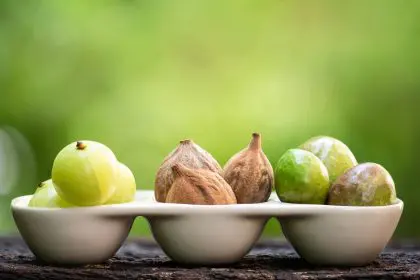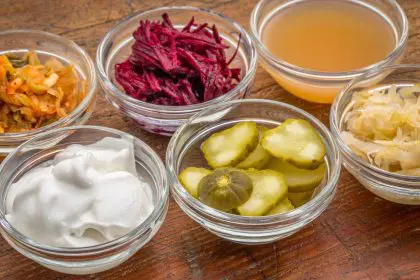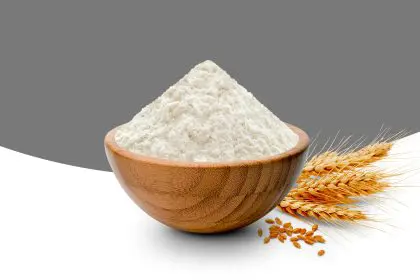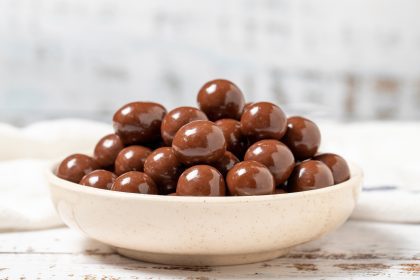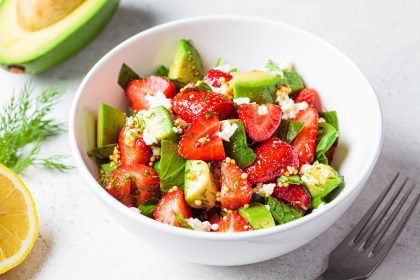The exploding probiotic supplement industry—valued at over $61 billion globally—promises digestive health in convenient capsule form. Yet mounting evidence suggests that certain traditional fermented foods deliver superior microbiome benefits at a fraction of the cost. These living foods contain diverse bacterial communities that laboratory-produced supplements simply cannot match in complexity or effectiveness.
Fermentation, an ancient food preservation technique dating back thousands of years across diverse cultures, creates metabolically active bacterial ecosystems that interact with human gut environments in sophisticated ways. Unlike isolated probiotic strains, these foods contain symbiotic communities of microorganisms that survive digestion more effectively and colonize the intestines more successfully.
Recent research tracking gut microbial changes reveals that regular consumption of certain fermented foods creates more significant microbiome diversity than commercial probiotic supplements. This diversity correlates directly with improved digestive function, enhanced immunity, reduced inflammation, and even potential mental health benefits through the gut-brain connection.
Traditional kimchi delivers unmatched bacterial diversity
The first fermented food outperforming supplements is traditional kimchi—the Korean staple combining napa cabbage, radishes, and various seasonings into a vibrant, tangy condiment. Authentic kimchi contains more than 100 bacterial species compared to the typical 1-10 strains in commercial probiotic supplements.
This bacterial diversity provides several advantages:
- Multiple species create a more stable ecosystem within the gut
- Different bacteria produce varied beneficial metabolites
- The community effect helps beneficial microbes outcompete harmful bacteria
- Diverse species address different aspects of digestive function
- The bacterial ecosystem adapts better to individual gut environments
Beyond bacterial benefits, kimchi delivers prebiotic fiber from vegetables, capsaicin from chilies, and allicin compounds from garlic—all supporting microbial growth and diversity. The combination creates a synergistic effect absent from isolated probiotic supplements.
Traditionally fermented kimchi also contains significant quantities of Lactobacillus sakei—a bacterial strain particularly effective at reducing pathogens in the digestive tract. Research demonstrates that regular kimchi consumption correlates with reduced incidence of inflammatory bowel conditions and improved digestion of complex carbohydrates.
For optimal benefits, seek unpasteurized kimchi in refrigerated sections rather than shelf-stable versions, as the latter undergo heat treatment that significantly reduces bacterial content. The characteristic fizz and sour aroma indicate active bacterial populations.
Authentic sauerkraut provides exceptional probiotic density
The second fermented powerhouse, properly prepared sauerkraut, delivers probiotic concentrations far exceeding typical supplements. While leading probiotic supplements advertise billions of CFUs (colony-forming units), a single serving of raw sauerkraut typically contains trillions of live bacteria—a thousandfold increase in potential colonizing organisms.
This cabbage-based ferment works through several mechanisms:
- The fiber in cabbage acts as a protective matrix, sheltering bacteria from stomach acid
- Sauerkraut bacteria produce specific enzymes that aid cabbage digestion
- The acidity creates an environment where beneficial bacteria thrive while harmful microbes cannot survive
- The fermentation process pre-digests certain cabbage compounds, making nutrients more bioavailable
- Live bacteria continue fermenting and multiplying after consumption
Sauerkraut particularly excels in delivering Lactobacillus plantarum, a bacterial strain associated with reduced intestinal permeability (leaky gut) and improved barrier function in the digestive tract. This species demonstrates exceptional survival through the acidic stomach environment compared to many supplement strains.
The bacterial benefits complement sauerkraut’s impressive nutritional profile, including vitamin C, vitamin K, and various antioxidant compounds. The fermentation process enhances the bioavailability of these nutrients while reducing compounds that might otherwise cause digestive distress.
For maximum benefit, choose refrigerated sauerkraut labeled “raw,” “unpasteurized,” or “containing live cultures.” Commercial shelf-stable versions undergo heat treatment that eliminates the living bacterial communities that provide the primary health benefits.
Kefir surpasses yogurt in probiotic potency
The third fermented food outperforming supplements is traditional kefir—a fermented milk product created using specific culture “grains” that contain both bacteria and beneficial yeasts. While yogurt receives more mainstream attention, kefir delivers substantially greater probiotic diversity and concentration.
Kefir’s advantages over both supplements and yogurt include:
- Containing 30+ bacterial strains compared to yogurt’s typical 2-5 strains
- Including beneficial yeasts absent from most supplements and yogurt
- Providing bacteria that colonize different parts of the digestive tract
- Containing specific strains that digest milk proteins problematic for some individuals
- Delivering kefiran, a unique carbohydrate with immune-modulating properties
Traditional kefir particularly excels in providing Lactobacillus kefiri, a bacterial strain specifically associated with reducing intestinal inflammation and enhancing the gut barrier. This species demonstrates exceptional ability to adhere to intestinal walls, outcompeting potential pathogens for colonization space.
The combination of bacteria and yeasts creates unique metabolic byproducts, including specific short-chain fatty acids that nourish colonocytes (cells lining the colon). These compounds support intestinal integrity in ways that isolated probiotic strains cannot match.
For optimal benefits, select traditionally fermented kefir made with actual kefir grains rather than commercial starter cultures, which typically contain far fewer species. Non-dairy alternatives using coconut water or fruit juice bases provide options for those avoiding dairy while maintaining significant probiotic benefits.
Miso delivers heat-resistant bacterial benefits
The fourth fermented food surpassing supplements is traditional miso—a Japanese fermented soybean paste created through a two-stage fermentation process involving both bacterial and fungal cultures. Unlike many probiotic foods, miso provides heat-resistant benefits that survive cooking processes.
Miso’s unique advantages include:
- Containing heat-resistant bacterial spores that reactivate in the intestinal environment
- Providing beneficial compounds produced during fermentation that remain even after heating
- Delivering Aspergillus oryzae enzymes that aid protein digestion
- Containing specific peptides that reduce inflammatory markers in digestive tissue
- Offering concentrated sources of isoflavones with gut-protective properties
Traditional miso particularly excels in providing resistant probiotic benefits that endure through various preparation methods. While live bacteria may be reduced in cooked applications, the metabolites, enzymes, and bioactive compounds created during fermentation maintain therapeutic activity regardless of preparation temperature.
Beyond probiotic benefits, miso delivers exceptional nutritional density, including complete protein, essential minerals, and vitamin K2—a nutrient specifically associated with cardiac and bone health that forms during the fermentation process.
For maximum benefit, incorporate both cooked and uncooked miso preparations into your routine. While miso soup provides certain heat-stable benefits, adding unpasteurized miso to dressings, dips, or dishes after cooking delivers the full spectrum of living probiotic organisms.
Kombucha provides unique fungal-bacterial synergy
The fifth fermented food outperforming supplements is traditional kombucha—a fermented tea beverage created using a SCOBY (symbiotic culture of bacteria and yeast). This unique ferment provides beneficial fungi alongside bacterial strains, creating ecosystem effects absent from bacterial-only supplements.
Kombucha’s distinctive advantages include:
- Containing beneficial yeasts that help manage problematic Candida species
- Providing acetic acid compounds that modulate blood sugar response
- Delivering polyphenols from tea that act as prebiotics for beneficial bacteria
- Containing glucuronic acid that supports natural detoxification processes
- Offering a matrix of organic acids that inhibit pathogen growth in the digestive tract
Traditional kombucha particularly excels in providing Saccharomyces boulardii, a beneficial yeast strain with extensive clinical research supporting its effectiveness for diarrhea, inflammatory bowel conditions, and antibiotic-associated digestive disruption. Commercial probiotics rarely include fungal components despite their demonstrated benefits.
Beyond microbial advantages, kombucha delivers antioxidant compounds from the tea base that become more bioavailable through the fermentation process. These compounds support cellular health throughout the digestive tract and beyond.
For optimal benefits, select unpasteurized kombucha with active cultures, visible culture fragments, and moderate sugar content. Commercial brands vary significantly in quality, with some containing heat-treated products with minimal living organisms.
Implementing fermented foods strategically
Incorporating these fermented foods effectively requires understanding both frequency and diversity principles. Research indicates that regular consumption of smaller amounts provides more sustainable microbiome benefits than occasional large servings.
A strategic approach includes:
- Starting with small portions (1-2 tablespoons) to allow microbial adaptation
- Gradually increasing serving sizes as tolerance develops
- Incorporating multiple fermented foods rather than focusing on a single type
- Consuming fermented foods at the beginning of meals to improve digestive enzyme activity
- Pairing fermented foods with prebiotic-rich ingredients to enhance bacterial growth
This progressive approach minimizes potential digestive discomfort while maximizing colonization opportunities for beneficial organisms. Unlike supplement regimens that deliver identical formulations daily, rotating fermented foods provides microbial diversity that better reflects ancestral eating patterns.
Individuals with compromised immune function, severe digestive disorders, or histamine sensitivities should consult healthcare providers before implementing fermented foods extensively. While generally beneficial, these foods contain powerful biological activity that may require medical supervision in specific health contexts.
The financial advantage of fermented foods proves substantial when compared with commercial probiotic supplements. A month’s supply of high-quality probiotic supplements often costs $30-60, while homemade fermented foods like sauerkraut or kefir cost approximately $5-10 for equivalent probiotic quantities. This economic efficiency makes microbial support accessible regardless of income level.
By integrating these traditional fermented foods into regular eating patterns, individuals can achieve microbiome benefits that surpass isolated probiotic supplements in both effectiveness and sustainability. These living foods represent a return to time-tested digestive support methods that complement modern nutritional understanding.


